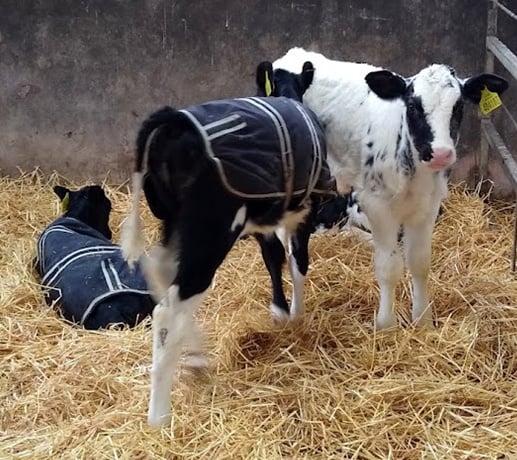By Clodagh Tanner MVB MRCVS
The health of calves early in life i.e. the first eight weeks, directly impacts future production and longevity in the herd.
Protecting the future health and survival of calves of course starts with timely feeding of adequate amounts of high-quality colostrum.
Good practices in colostrum management, biosecurity and housing can help prevent most diseases in pre-weaned calves.
In addition, you must be able to identify sick calves and provide appropriate supportive care early for the best survival rates and to minimize effects on long-term productivity.
Special attention should be given to calves’ behaviour around feeding time.
The calf should stand eagerly at the feeding station and promptly consume the entire bottle/bucket. Calves should be monitored for nasal discharge, cough, rapid breathing, drooping ears and sunken eyes. If a calf is suspected of illness, it should be thoroughly examined (including taking a temperature) and the appropriate protocol initiated for the specific illness.
In this case we will focus on pneumonia:
Isolate: Sick calves should be isolated in a separate area with fresh bedding to keep them clean, dry and warm. To avoid spreading disease to healthy calves, sick calves should be fed last. Wash and disinfect hands, boots and equipment after feeding or handling sick calves.
Warm: Monitoring temperatures in sick calves is helpful in deciding appropriate care and determine if treatment is being successful. Calves with a temperature < 38 C can be warmed with a heat lamp, calf jackets, administering warm fluids or even a hair dryer. Remember the normal calf temperature is 38.5-39.0°C.
Water: Ensure fresh clean water is available at all times.
Milk/milk replacer: Calves cannot recover from illness without the calories and nutrients provided by milk. Give a smaller volume more frequently at normal concentration and temperature if they are unable to finish a full feeding. Tube feed if needed.
Electrolytes: Oral electrolytes can be administered to dehydrated calves, but should be separated from milk feeding by at least two hours. Electrolytes are fed in addition to milk, not in place of milk. In severe cases IV fluids given by a vet may be the only effective way to treat dehydration.
Anti-inflammatories (NSAID’s e.g. Metacam and/or Steroids e.g. Rapidexon): Decreases the severity of clinical symptoms, increases appetite and decreases the lung damage associated with inflammation.
Antibiotics: There are a large number of potential pathogens in calf pneumonia, and the exact choice of antibiotic depends on a number of factors including susceptibility and antibiotic category. There are also a number of practical considerations, such as cost and ease and frequency of administration.
As always prevention is better than cure, look at stress, environment, stocking density, buying in policy, nutrition and vaccination policies. Swabs and blood samples or post-mortem samples can help to determine what pathogens you have on farm and decide specific vaccination and treatment protocols appropriate to your herd. Early or acute cases are the best ones to sample to try to identify the initiating cause.
Speak to your vet about diagnosis and appropriate medicines to use on your farm.





Comments
This article has no comments yet. Be the first to leave a comment.